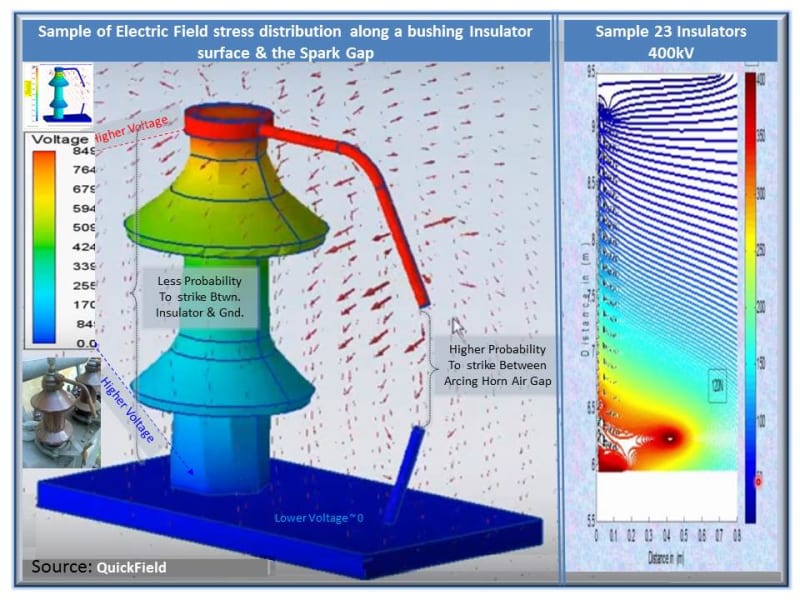Below are some background associated with arcing horn applications for OH Transmission Lines
ARCING HORN OR PROTECTIVE SPARK GAP:
a) Is a protective element against overvoltage for insulator in OH transmission line & equipment bushings.
b) The arcing horn is set with the least path impedance than the insulators such as in the event of flashover overvoltage an arc strike between the air gap on the metallic elements instead of across the insulators.
c) Somehow, arcing horn and corona rings installed at the end of the insulator assembly help to reduce the number of the disk insulators while maintaining the desirable electrical strength (BIL & BSL).
d) In North America, many OH Lines use corona ring and less common to spec. out arcing horns. In Europe, it is a common practice for overhead T. Lines specify arcing horns in OH T. Line and equipment such as power transformer.
e) One of the benefits of using arcing horn is the cost and the capability to operate with high discharge energy of lightning strike or back-flashover overvoltage.
f) Some of the downsides of use of arching horns are the wide operation performance due to the weather-related dependance including air moisture, temperature, contamination among other factors that influence the system reliability.
g) In the last couple of decades, T. Lines metal oxide surge arresters are used as an option with less weather dependance performance than the arcing horn.
Below is an excerpt showing a sample of the field stress distribution between the air gaps of the arcing horn and across the insulator.
I hope this help to visualize the operation performance of the arcing horn.



